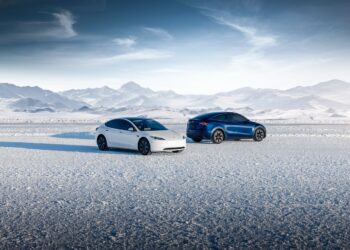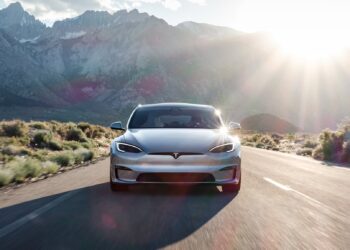Tesla battery supplier Panasonic is accelerating plans to increase battery cell production at Gigafactory Nevada. Increasing battery production at Giga Nevada would likely help Tesla increase its vehicle production capacity and benefit from the Inflation Reduction Act’s (IRA) electric vehicle (EV) tax credits.
An executive from Panasonic shared that Tesla approached the Asian battery supplier about battery supply. Tesla told Panasonic it would buy as many battery cells as Panasonic could make.
Tesla has made similar public statements in the past, emphasizing that its 4680 production lines would not disrupt any cell supply relations with other battery suppliers. Elon Musk and other Tesla executives have always been clear that the company would still buy battery cells from its partners, including LG Energy Solutions, Panasonic, and CATL in China.
In response to Tesla’s statement, Panasonic decided to install an additional production line at Gigafactory Nevada, sources told Nikkei Asia. The executive who shared information on the matter added that Giga Nevada is “already crammed,” explaining why only one battery cell production line is being added.
Potential Impact of Tesla and Panasonic’s Battery Production
The new cell production line is expected to begin operation in a year or two. It’s estimated to increase Tesla Giga Nevada’s annual production capacity by about 10% from 38 GWh to 39 GWh. At 39 GWh, Giga Nevada would produce enough battery cells for Tesla to manufacture between 500,000 to 700,000 Tesla Model 3 vehicles.
Tesla isn’t the only EV automaker investing in battery cell production. The Inflation Reduction Act’s EV credits for domestic cell production have encouraged more automakers and foreign battery suppliers to build battery plants in the United States.
In the Q4 2022 earnings call, Elon Musk commented that the IRA’s credits for domestic manufacturing could make significant contributions in the future.
“Long term, we expect these–the value of these credits to be very significant,” said Musk. “And in the case of Panasonic domestic manufacturing, we’re splitting the value of the credits. So it will–the value of credits this year will not be gigantic, but I think it could be gigantic.
Zack Kirkhorn shared a bit more about Tesla’s estimates regarding the IRA’s credits related to battery composition.
“So different products, we think, will get different amounts of credit. The regulations here are still in flux and there continues to be updates, so this is just our best understanding at the moment. But we think on the order of $150 million to $250 million per quarter this year and growing over the course of the year as our volumes grow,” Kirkhorn said.
Kirkhorn concluded that the IRA’s credits could eventually impact the affordability of some electric vehicles.
Panasonic’s Future in the United States
Besides Tesla, Panasonic might start working with Stellantis and BMW on new battery plants in North America. The Japanese battery supplier already selected Kansas as the site for a 4680 plant.
“We were concentrating on Kansas and developing the new [4680] battery, but the IRA turned the tide. Tesla started saying to prioritize batteries that we can quickly increase in quantity,” said the Panasonic executive.
Panasonic shifted its plans for the Kansas facility. It will produce 2170 battery cells in Kansas as well, along with 4680 cells. Sources state that the Asian battery supplier will focus on making 2170 cells in Kansas because they are “a few months faster to supply.”
The Teslarati team would appreciate hearing from you. If you have any tips, contact me at maria@teslarati.com or via Twitter @Writer_01001101.










